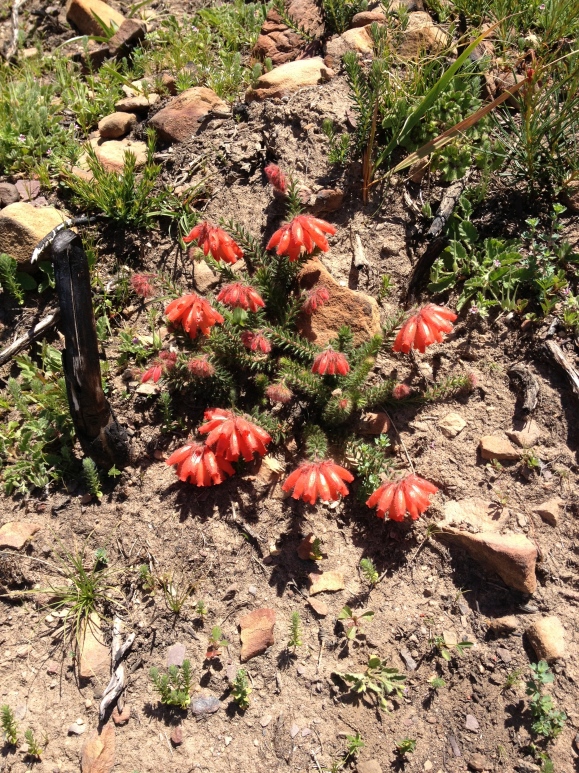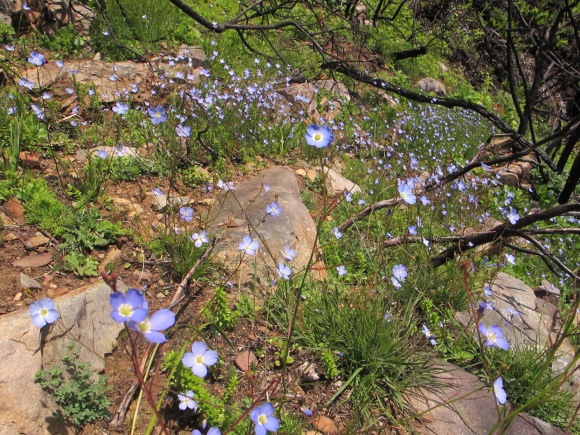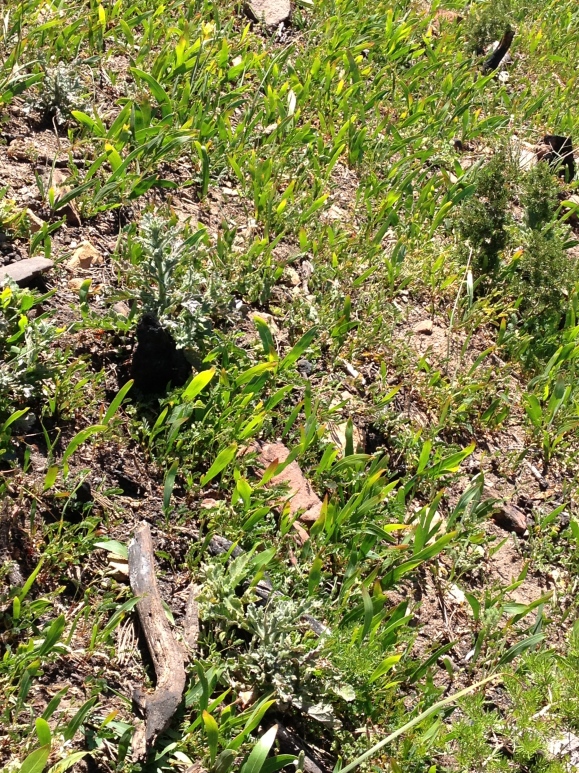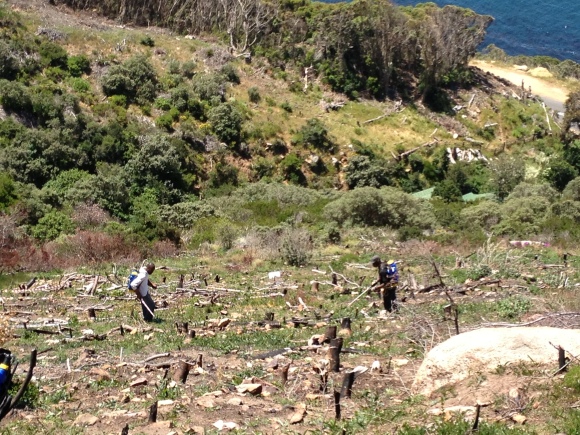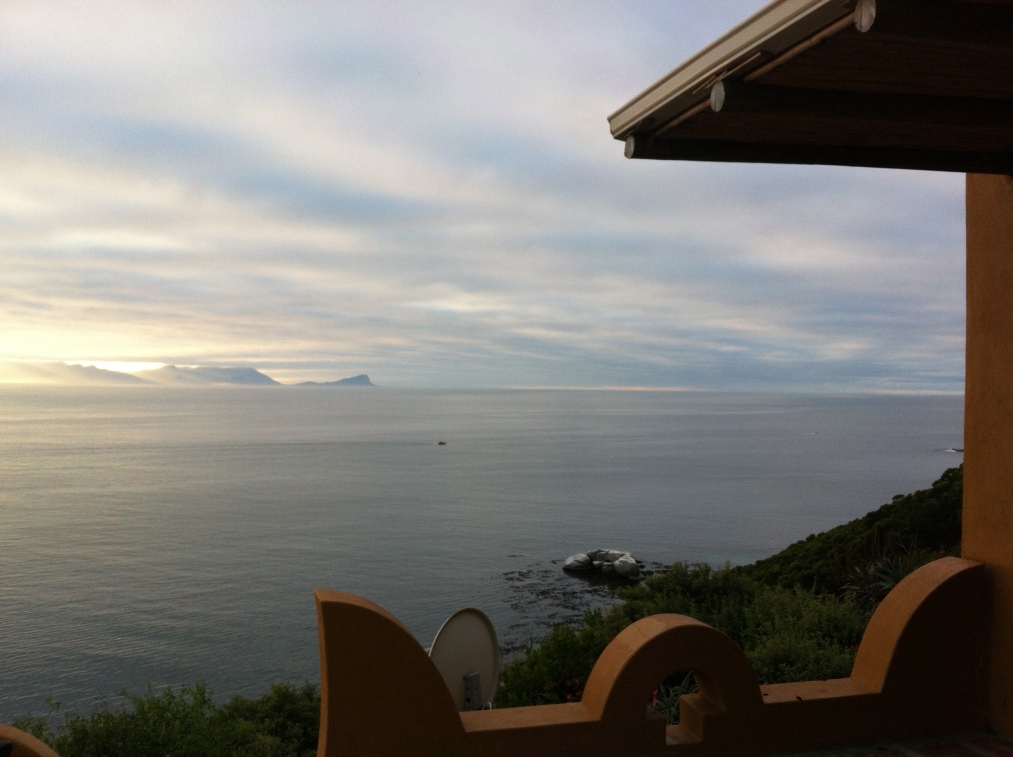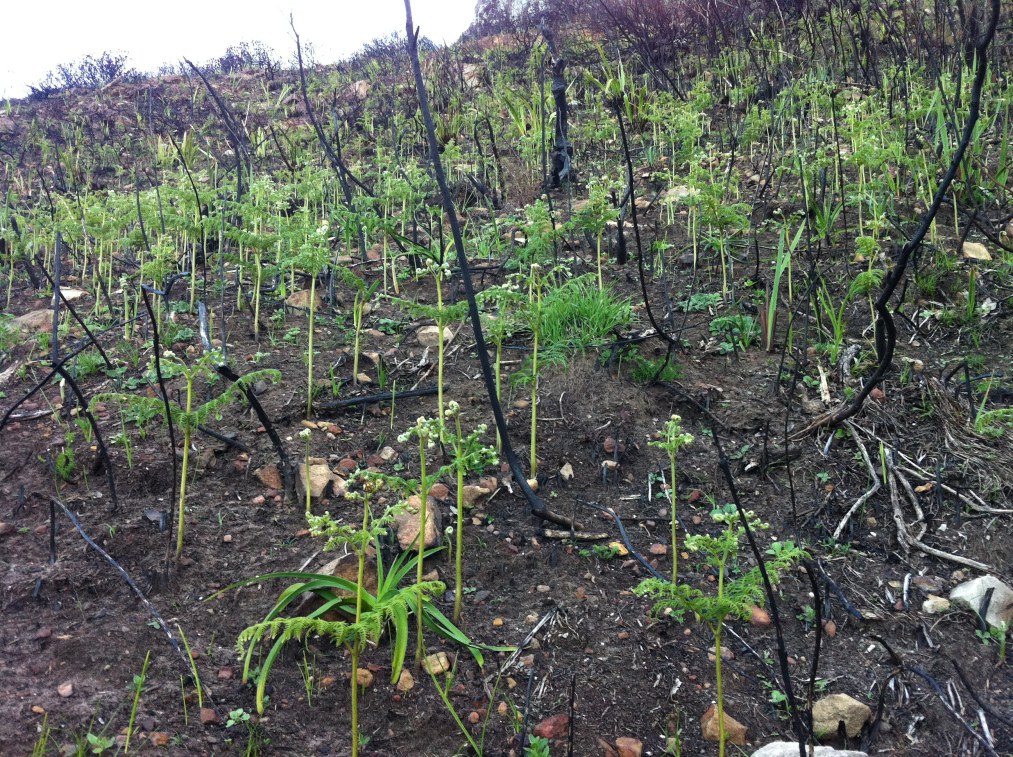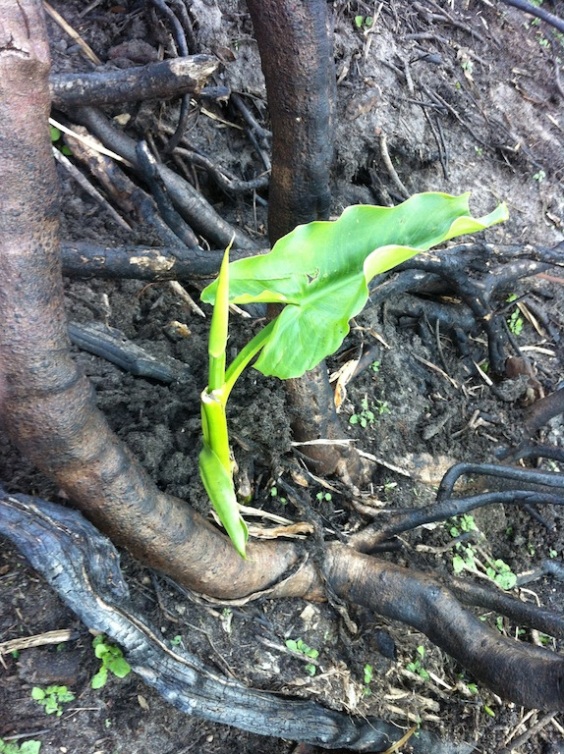Two weeks ago, in an act of spine-chilling prescience I posted a BlueGumsFree blog entitled “Fire and Rain”.
Well for 14 extraordinary and terrifying hours this week these two elements had a dramatic interplay on the mountain slopes above and around the Stone Cottage at BlueGumsFree. As I mentioned a fortnight ago fire and rain are elemental anima of this place, except that fire is a characteristic of summertime and rain of winter. This week, because of an atypical convergence, these two powerful natural forces dominated our lives.

There has not been a major fire in the Castle Rock area for 24 years, and with each passing year the added biomass has increased the threat of a devastating conflagration. A well known environmentalist has argued that the most effective means of dealing with the huge invasive alien challenge in Castle Rock would be to conduct a controlled burn with firefighting services at the ready. This would hasten a process of rehabilitation that is happening far too slowly, not only here, but almost everywhere in the country. Of course the huge risks associated with such a strategy have made it almost impossible to be adopted as a standard practice.
Unwittingly we conducted an experiment to this effect at Blue Gums this week.
For twelve years now I have lived here in the Castle Rock area with the certainty that a day would come when fire would return to threaten our home and our property. There has never been a moment’s doubt that one day we would face the seemingly impossible challenge of defending our puny human edifices from the raging power of a mountain fire, that from our puny human point of view would be described as being “out of control”. Having just watched a mountain fire dance and jump from tree-top to tree-top and from crag to crag, I can tell you that when a mountain fire burns, it is far more apt to describe the fire as being in “total control”.

There is such a fine line between a fire in our control and a fire in total control of our lives and our environment; one moment a cigarette butt or an unattended braai, a supervised burning of stacks or a candle by our bedside, the next moment a raging havoc of calamitous proportions.

It all began for me in the late evening this Thursday when my dinner in Stellenbosch was disturbed by a call from Tarisai Charewha, our manager at BlueGumsFree to tell me that the mountain was burning. I was overcome by a bizarre cocktail of emotions: horror, disbelief and a strange sense of relief that the inevitable had finally happened. I raced back to Castle Rock, taking Baden Powell Drive. As I crested the hill at the Eastern end of Khayelitsha and headed towards the coast at Monwabisi I was confronted by a site that rocked me to the very core. The entire mountainside at BlueGumsFree was ablaze in one terrifying and spectacular wall of flames.
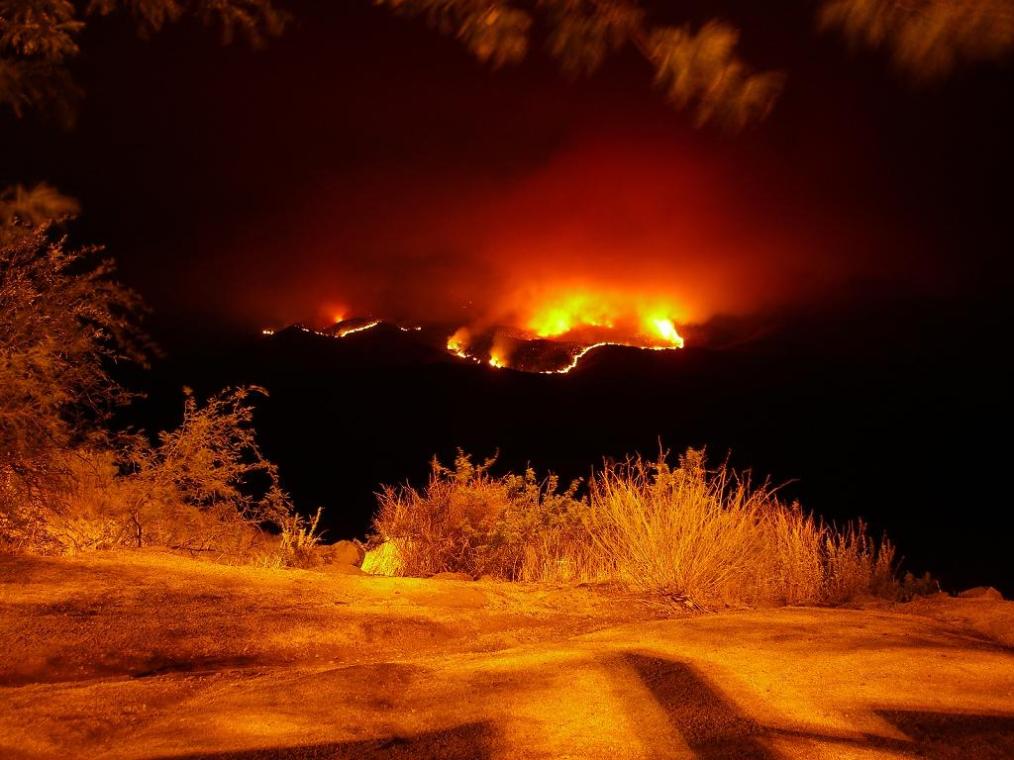
I raced along the False Bay coastline, heading for the beacon of fire that was consuming the vegetation around my house and was about to place dozens of other dwellings in the vicintiy at serious risk.
I have seen many mountain fires over the years and I have witnessed many shack fires. As I drove along the coast, hurtling towards a fire I now fervently wished was not ablaze, these two somewhat distant witnessings melted into one, and in my mind’s eye I saw a fire, in total control, leap from tree line to rooftop, and, in one sharp burst of explosive force, swallow my home and all its intimate associations.
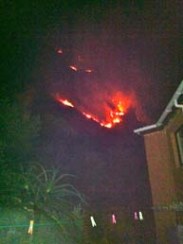
When I finally arrived at BlueGumsFree I was greeted by a throng of curious onlookers standing on the roadside watching the flames gorging the mountain. In their midst stood two fire trucks and a group of very focused and attentive firefighters. I raced up the stairs to a smaller group of onlookers: my two sons and their partners, Tarisai and his wife and a number of concerned and supportive neighbours. Family discussions over the years had prepared the boys for such an eventuality and they knew exactly what were considered items of value and where to store them safely. Important documents and family photographs were already stored in the Reverend Green’s bunker-like room, the famed and much loved “Good ‘Ole”. The gas bottles that power some of our appliances had been disconnected and carted to a safe spot near the road. Our neighbour and the vice-Chair of the Castle Rock Conservancy, Jonathan Voss, had seen to it that our dogs had been placed in Tarisai’s car to be whisked to safety. We were moments away from an evacuation.
But the winds were on our side so we manned our post on the roof of the “Good ‘ole”, hosepipes and beaters at the ready, waiting to leap into action if the fire got any closer to the buildings and if the firefighters needed our assistance.
And so began a night of anxious vigil, not only for BlueGumsFree, but for all other residents on the urban edge in the deep South Peninsula, especially those to the south of the fire, since the north-wester, the wind that brings the rain, was by now in full cry, egging on and aiding and abetting the demonic fire.

The fire-fighters and the national park officials were there too, of course. They were calm, efficient, competent and helpful. They were also friendly and communicative. Every four hours the fire-fighting crews were relieved and every new crew was as engaging and professional as the next. It was the “graveyard” crew that had the most to do. At about 3.00am the North Wester blew itself into a frenzy and the flames around the house flared up again and charged into the remaining stands of spider-gums, southwest of BlueGumsFree. It was not long before they once again matched the ferocity and intensity of those sections of the fire that were ablaze in the upper reaches of the mountain and were flying, soaring and billowing in huge glowing orange bolides and ferris wheels of destruction. The firefighters laid out their lines, dragging them up the mountainside, clicking them and harnessing them together, and then for a short, sharp burst of about twenty minutes they wrested control from the fire just a few metres to the South of the house.

Other than that there was no action for the rest of the night, besides imbibing copious cups of coffee, along with each successive crew of firefighters, and yet not a single moment was without anxiety and dread – much less so, of course, for the firefighters than ourselves.
At long last dawn arrived and we were able to see the extent of the damage caused by the fire. All around BlueGumsFree we witnessed an extraordinary sight.
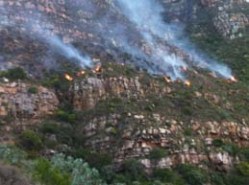
Those with a penchant for fantasy will say that it was the work of that merry band of Blue Gums ghosts, with Jane Eliza, the Reverend Green and Lalu Abdul at the forefront because only the stands of invasive aliens and the very old fynbos higher up the mountain had been obliterated by the fire. The new growth of fynbos, that has sprung up in concentric circles around the house in response to our clearing efforts, was almost completely unburnt. Our efforts over the past decade had proven, beyond dispute, to be effective. In spite of the vagaries and prevarications of the blaze, the new fynbos had acted as a cordon sanitaire, keeping the fire at bay and protecting our home, our lives and our belongings.

At 10am on Friday morning, about 18 hours after the fire started, the rain finally arrived and set in for the day.
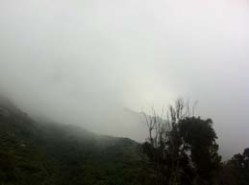
The fire has been doused along with the danger and the dread. With huge relief and even some satisfaction we can say that our environmentalist friend may indeed be onto something. The fire has accomplished more in eighteen hours in terms of clearing stands of invasive alien trees than we were able to accomplish in twelve years. It further reduced the immediate risk of disaster by burning the old stands of protea on the upper slopes that had not burnt in twenty four years. With the northwesterly wind blowing, it will have scattered fynbos seeds, into the areas cleared by BlueGummers and by fire. And finally it has produced a firebreak of significant proportions on the southern end of the Castle Rock conservancy. We will be a lot less anxious about fire for the next five or six summers.
One of the national park officials said to me when I arrived at the scene of the fire that this was a good thing because the mountain really needed to be burnt. What could have been better then, than a cold fire in the middle of winter, making it, as dramatic as it appeared, much less in total control than it would have been in midsummer. And then came the rains (it is still raining now) to drown the fire before it really ran riot.
Perhaps the Blue Gums ghosts had a hand in it after all.






